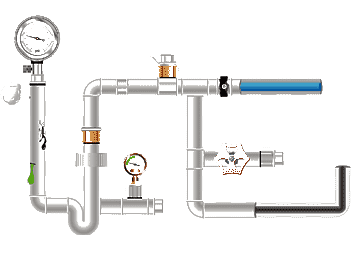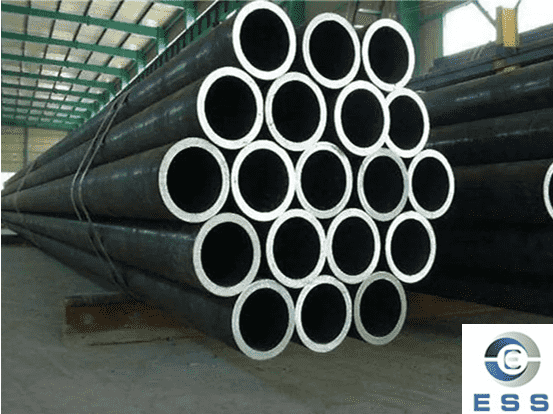Oil drill pipe is an indispensable key component in oil and gas drilling
engineering. It is a hollow steel pipe used to connect the drilling rig's
surface equipment to the drill bit at the bottom of the well. It serves as a
channel for drilling fluid circulation and is responsible for transmitting
torque and tension to the bottom-hole tools. Drill pipe must possess high
strength, good toughness, fatigue resistance, and corrosion resistance to cope
with the complex downhole environment.
Drill pipe withstands enormous axial
tensile forces, torque, internal and external pressure differentials, bending,
and vibration during drilling. Therefore, materials, heat treatment,
manufacturing precision, and joint design must strictly comply with international
standards (such as API
SPEC 5D and API SPEC 7-1).
Main Functions of Oil Drill Pipe
1. Power Transmission
Transmits the torque of the drilling rig
spindle to the drill bit at the bottom of the well, causing the drill bit to
rotate and break up the formation.
2. Drilling Fluid Delivery
Drilling fluid flows from the surface
through the drill pipe to the drill bit, used to cool the drill bit, carry
cuttings, and balance bottom-hole pressure.
3. Transferring Drill Pressure
Pressure is transferred to the drill bit
through the weight of the drill string itself or by applying additional drill
pressure to improve drilling efficiency.
4. Connecting Function
Tools such as kelly
pipe, standard drill pipe, heavy
weight drill pipe and drill collars are reliably connected to form a
complete drill string.
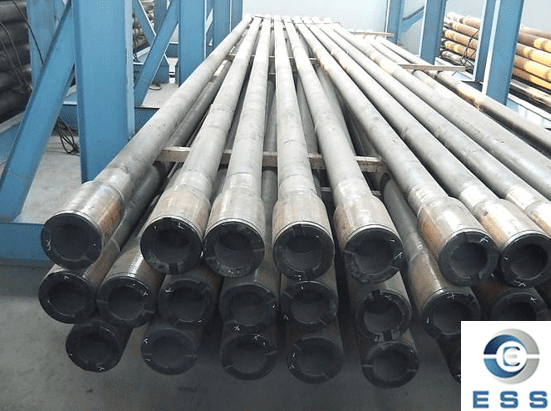
Material Grades of Oil Drill Pipe
According to API SPEC 5D standard, common
material grades for oil drill pipes include E75, X95, G105, and S135.
|
Steel Grade
|
Tensile Strength (MPa)
|
Typical Yield Strength (MPa)
|
Characteristics
|
|
E75
|
≥655
|
517–655
|
Suitable for shallow and medium well
depths, economical choice
|
|
X95
|
≥758
|
655–758
|
Commonly used in medium to deep wells,
strength higher than E75
|
|
G105
|
≥910
|
758–910
|
Suitable for deep wells and high torque
drilling
|
|
S135
|
≥1,034
|
931–1,034
|
Essential for ultra-deep and complex
wells, high strength and high toughness steel
|
Structure of Oil Drill Pipe
Oil drill pipe mainly consists of three
parts:
1. Pipe Body
Made of high-strength seamless
steel pipe, with a wall thickness of generally 9–11 mm, it is the main body of the drill pipe.
2. Tool Joint
Made of alloy steel forgings, connected to
the pipe body by friction welding or inertia welding. The joint is thicker and
stronger than the pipe body to withstand torque and wear.
3. Welded Zone and Upset Section
Oil drill pipe is made of rolled seamless
steel pipe. To enhance joint strength, both ends of the drill pipe are
thickened.
Thickening methods include:
Internal Upset (IU)
External Upset (EU)
Combined Internal and External Upset (IEU)
The length of the thickened transition
section is generally 20–130 mm, which can improve the
fatigue life of the connection by 30–50%.
Oil Drill Pipe Lengths
Range 1: 5.49–6.71
m, shorter, commonly used for well workovers or special wells;
Range 2: 8.23–9.75
m, most common, approximately 9 meters/pipe;
Range 3: 12.19–13.72
m, commonly used in deep wells or offshore drilling.
Classification of Oil Drill Pipe
Oil drill pipe is classified into kelly
pipe, ordinary drill pipe, and heavy weight drill pipe.
The connection sequence is: 1 kelly pipe +
n standard drill pipes (determined by well depth) + n heavy weight drill pipes
(determined by drill string assembly design).
Based on thread type, drill pipe joints are
divided into four types: IF, FH, REG, and NC.
1. Kelly Pipe
The kelly pipe is located at the top of the
drill string, usually square or hexagonal, and plays a crucial role in the
drilling process.
Function of The Kelly Pipe:
During drilling, the kelly pipe, in
conjunction with the bushing and rotating bushing, transmits the surface
rotational torque to the drill pipe, thereby driving the drill string and drill
bit.
It bears the weight of the entire drill
string.
It serves as a channel for drilling fluid
circulation.
Structure of The Kelly Pipe:
The kelly pipe consists of upper and lower
joints and a pipe body.
The pipe body is usually square or
hexagonal (square is more common in oil drilling).
2. Standard Drill Pipe
Function of The Standard Drill Pipe:
The drill pipe is a basic component of the
drill string.
Its main functions are to transmit torque
and deliver drilling fluid, and its gradually elongating characteristic allows
for continuous wellbore deepening.
Standard Drill Pipe Structure:
Drill pipe mainly consists of two parts:
the drill pipe body and the drill pipe joint.
The body, as the main structure of the
drill pipe, provides primary support and transmits power.
The joint plays a crucial role in
connecting multiple drill pipe sections to form a continuous drill string.
3. Heavy Weight Drill Pipe (HWDP)
Heavy weight drill pipe is similar to oil
drill pipe, also a hollow steel column approximately 10 meters in length.
However, each section weighs more than oil drill pipe, and its wall thickness
is two to three times that of oil drill pipe.
Functions of Heavy Weight Drill Pipe:
Heavy weight drill pipe is a downhole tool
used to add weight to drilling platforms.
It is typically installed between the drill
pipe and drill collars, transmitting power and applying pressure to the drill
bit.
It can prevent fatigue damage caused by
changes in the drill string cross-section and can replace some drill collars.
Its simple suspension method makes tripping
operations more convenient and time-saving.
Heavy Weight Drill Pipe Structure:
Heavy weight drill pipe features extended
joints, increased wall thickness, and externally thickened sections.
Carbide-coated surfaces extend its service
life.
Oil Drill Pipe Standards
API SPEC 5D (Seamless drill pipe standard)
API SPEC 7-1 (Drill string connector
standard)
ISO 10424-1 / ISO 15546 (International
equivalent standard)
NS-1™ / DS-1™ (Third-party certification standard, commonly used in the North Sea
and North American markets)
FAQ
1. What are The Common Specifications for
Oil Drill Pipe?
According to API SPEC 5D standard, common
sizes: 2
3/8" drill pipe, 2 7/8" drill pipe, 3 1/2" drill pipe,
4" drill pipe, 4 1/2" drill pipe, 5" drill pipe, and 5 1/2"
drill pipe.
2. What is The Difference Between Oil
Drill Pipe and Drill Collars?
Drill pipe is primarily used to transmit
torque and deliver drilling fluid; drill collars are primarily used to apply
drilling pressure and maintain wellbore stability; they differ in weight,
diameter, and function.









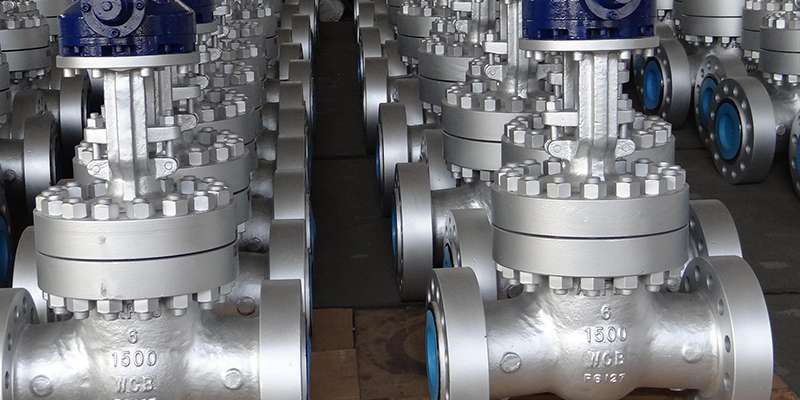



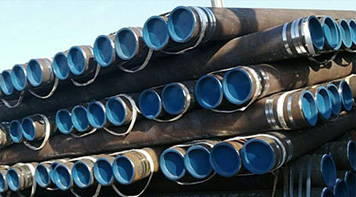 Eastern Steel Manufacturing Co.,Ltd not only improve product production and sales services, but also provide additional value-added services. As long as you need, we can complete your specific needs together.
Eastern Steel Manufacturing Co.,Ltd not only improve product production and sales services, but also provide additional value-added services. As long as you need, we can complete your specific needs together.
